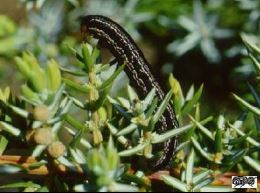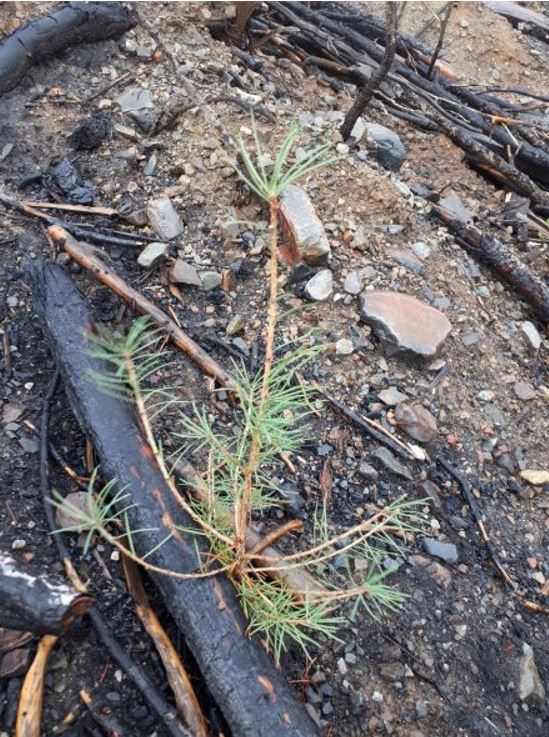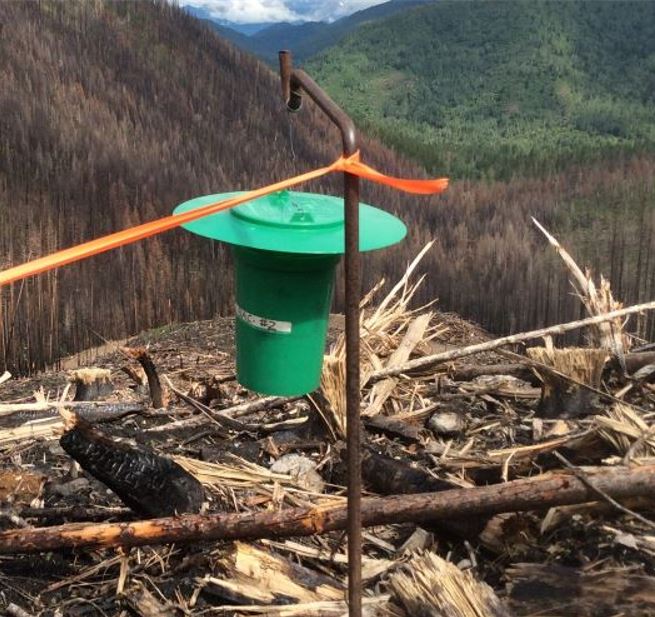Black army cutworm
Actebia fennica
Black army cutworms feed on young trees and plants growing on recently burned sites.
On this page
Description
Black army cutworm was a major pest in the 1980s when prescribed burning was used for site preparation. Once prescribed burning was no longer used for site preparation, the impacts of the black army cutworm became less severe.
An increase in wildfires activity often leads to increased black army cutworm activity. Damage is most significant 2 to 3 years after late season wildfires (July to October) and one year after an early season wildfire (before July).
Seedlings planted on recently burned sites with little or no vegetation are more likely to be damaged by cutworm larvae.
Black army cutworm has one generation per year. The cycle has the following steps:
- Adults (moths) lay their eggs on recently burned sites in mid-July to September
- The eggs hatch and larvae overwinter in the soil
- Larvae emerge to feed in the spring (May/June)
Larvae are velvety black on top with white lines along their sides and their undersides are grey in colour. They're 0.5 to 4 centimeters long. Larvae are nighttime feeders so they are difficult to find.
Host species
Black army cutworm feeds on a range of plants and conifer seedlings growing on recently burned sites. Western larch seedlings are a particular target.
Management
Planting recently burned sites should be delayed three years after a late season fire or two years after an early season fire. Planting after vegetation has flushed can also reduce impacts on seedlings.
Pheromone monitoring can also be used as an early warning system the year before planting. Multipher traps should be set-up by the first week of July, collected mid-September and checked regularly throughout the summer.
Many factors will impact seedling survival. It is recommended that follow-up surveys are completed one year after cutworm damage to assess survival and to determine if fill planting is required.
Damage symptoms
Black army cutworm feeding typically occurs in patches and damage to seedlings may vary by species. Most seedlings can sustain moderate (less then 60%) defoliation with limited impact on growth or survival.
Identification images

Black army cutworm

Damaged sapling

Shot hole damage on leaves

Black army cutworm trap
Further reading
Read more about the black army cutworm in the Field Guide to forest Damage in B.C.(PDF, 6.6MB)
